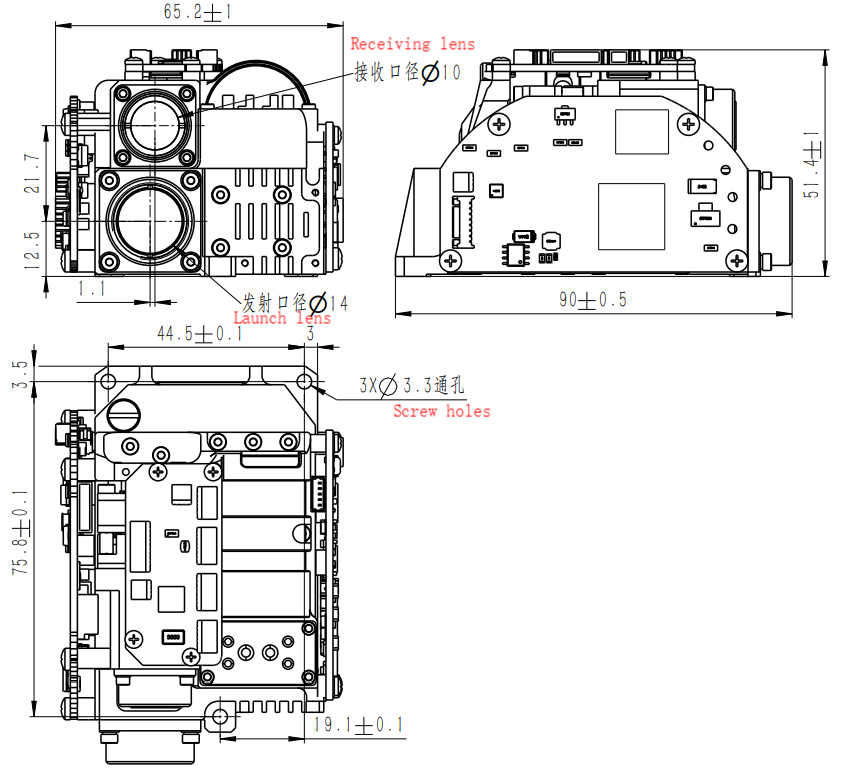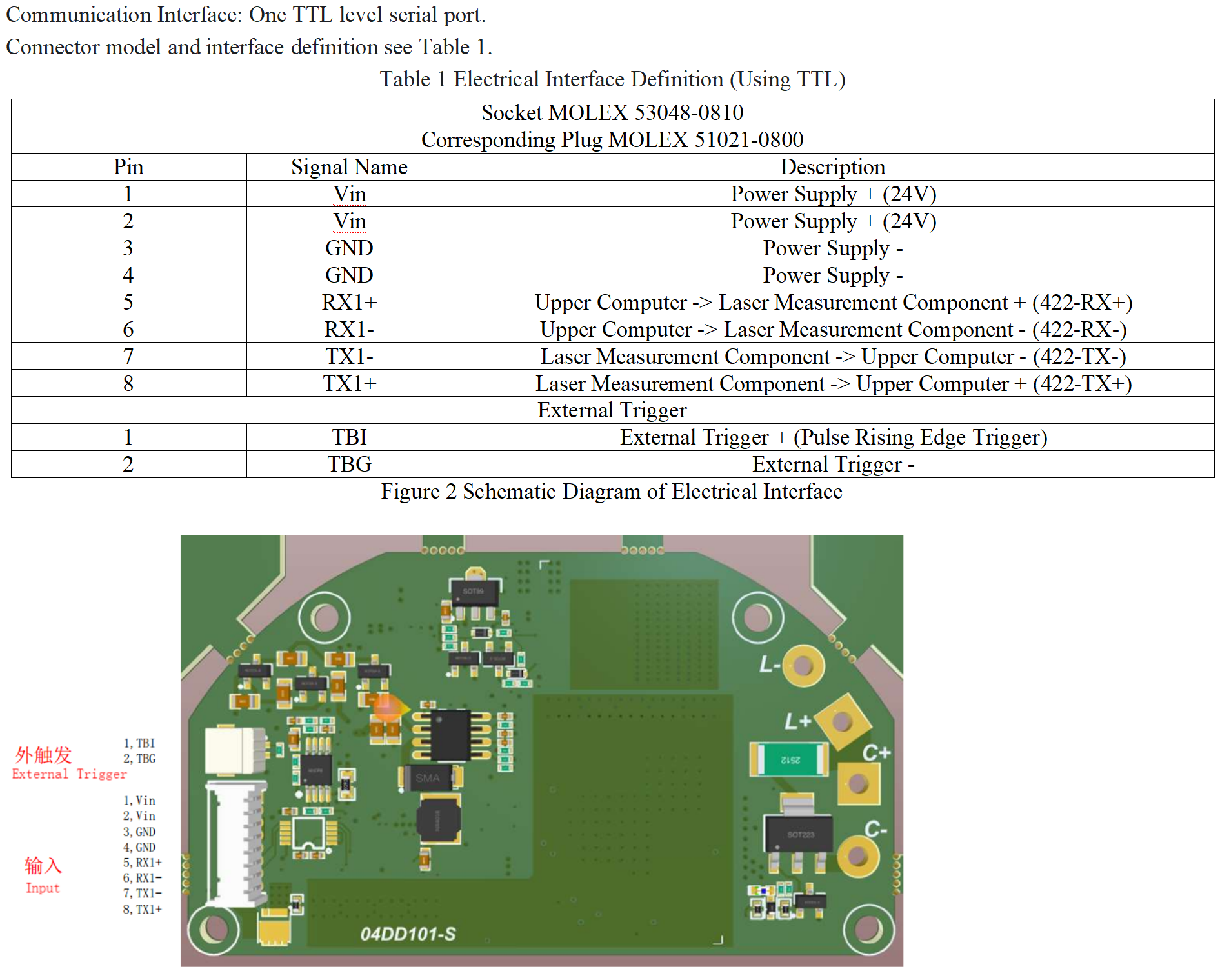1) Operating Modes: Ranging, Target Designation;
2) Pump Source: Diode Array;
3) Operating Wavelength: 1.064μm;
4) Pulse Energy: ≥20mJ;
5) Pulse Energy Fluctuation: Within a target designation cycle, the energy fluctuation of a single pulse does not exceed 10% of the average energy (measured after 2 seconds of light emission);
6) Beam Divergence: ≤0.6mrad;
7) Pulse Width: 10±5ns;
8) Laser Axis Stability: ≤0.05mrad;
9) Ranging Performance:
10) Ranging Frequency: 1Hz/5Hz, single shot;
a) Continuous ranging time at 1Hz is not less than 5 minutes, with a 1-minute rest;
b) Continuous ranging time at 5Hz is not less than 1 minute, with a 1-minute rest;
c) Minimum measurement distance: not greater than 300m;
d) Maximum measurement distance: not less than 3000m;
e) Ranging accuracy: ±1m;
f) Probability of correct measurement: not less than 98%;
g) Ranging logic: first and last targets;
11) Target Designation Performance:
a) Laser coding accuracy: 2.5μs.
b) Laser target designation frequency base: 20Hz.
c) Laser target designation cycle:
- Short cycle target designation:
A single target designation lasts not less than 20 seconds, with an interval not exceeding 30 seconds, and continuous target designation for 8 cycles.
- Long cycle target designation:
A single target designation lasts not less than 47 seconds, with a restart interval not exceeding 30 seconds, and continuous target designation for 2 cycles.
After the end of a target designation cycle, the interval before restarting continuous target designation is not less than 30 minutes.
12) Laser Coding:
a) Complies with MIL-STD-810G system requirements and has user self-coding expansion capability;
b) Capable of receiving external synchronization signals to control laser emission for coding;
c) Coding method: Precise frequency code (eight pre-stored periodic code encodings);
13) Dimensions and Weight:
a) Outer dimensions envelope: ≤92mm×67mm×53mm;
b) Weight: ≤290g.
14) Input Power Requirements:
a) Average power consumption during operation is not greater than 55W, and the peak is not greater than 100W.
b) Operating voltage range is 20V to 28V.
15) Electrical Protection:
After the circuit board is designed and adjusted, it is coated with a three-proof varnish for "three-proof" treatment.
Environmental Adaptability Requirements
Temperature Requirements
1) High-temperature requirements:
Operating temperature: ≤+55℃;
Storage temperature range: ≤+70℃.
2) Low-temperature requirements:
Operating temperature: ≥-40℃;
Storage temperature range: ≥-45℃.
Vibration Requirements
Capable of withstanding flight vibration and the impact of takeoff and landing, and all equipment can withstand the environmental conditions of automotive transportation.
Vibration is a swept spectrum, with 15Hz to 33Hz being equal displacement sine vibration with a displacement of 0.91mm; 33Hz to 700Hz being equal acceleration sine vibration with an acceleration of 2g.
Vibration in three directions for 1 hour each.
Test specimen status: The product is placed on the test bench in the normal operating state during impact, and the product is powered on;
After impact testing, the product should work normally.
Shock Requirements
- Vertical axis direction ≥ 10g,
- Transverse axis direction ≥ 10g,
- Longitudinal axis direction ≥ 10g;
- Ring sawtooth wave, duration 11ms, X, Y, Z axes, two directions per axis, one time each, totaling 18 times.
- Test specimen status: The product is placed on the test bench in the normal operating state during impact, and the product is powered on;
- After shock testing, the product should work normally.















